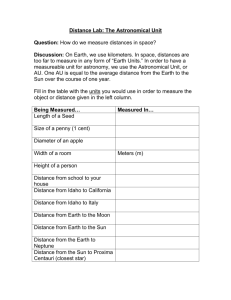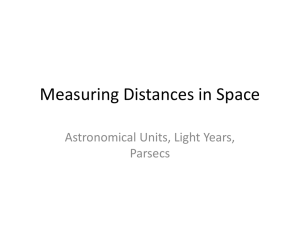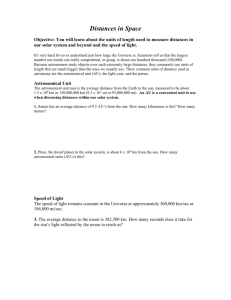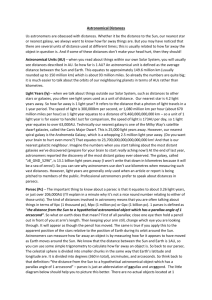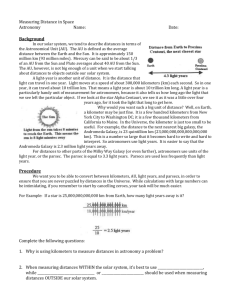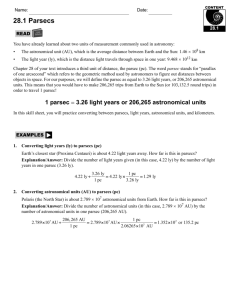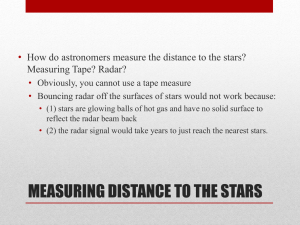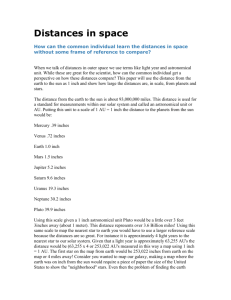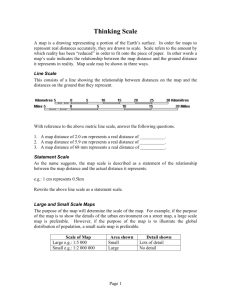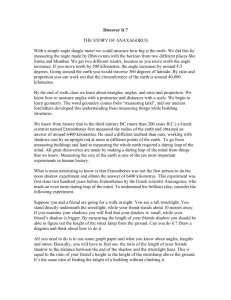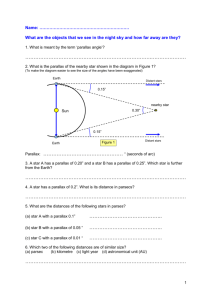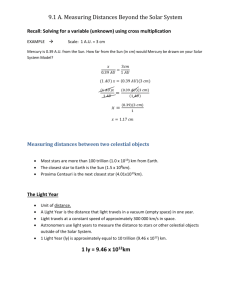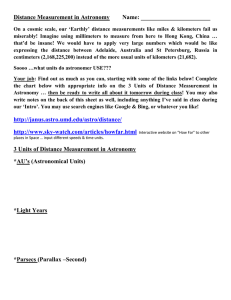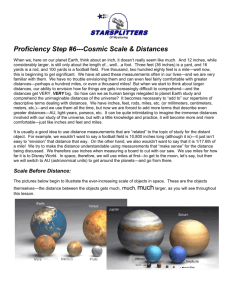Astronomical Distances
advertisement
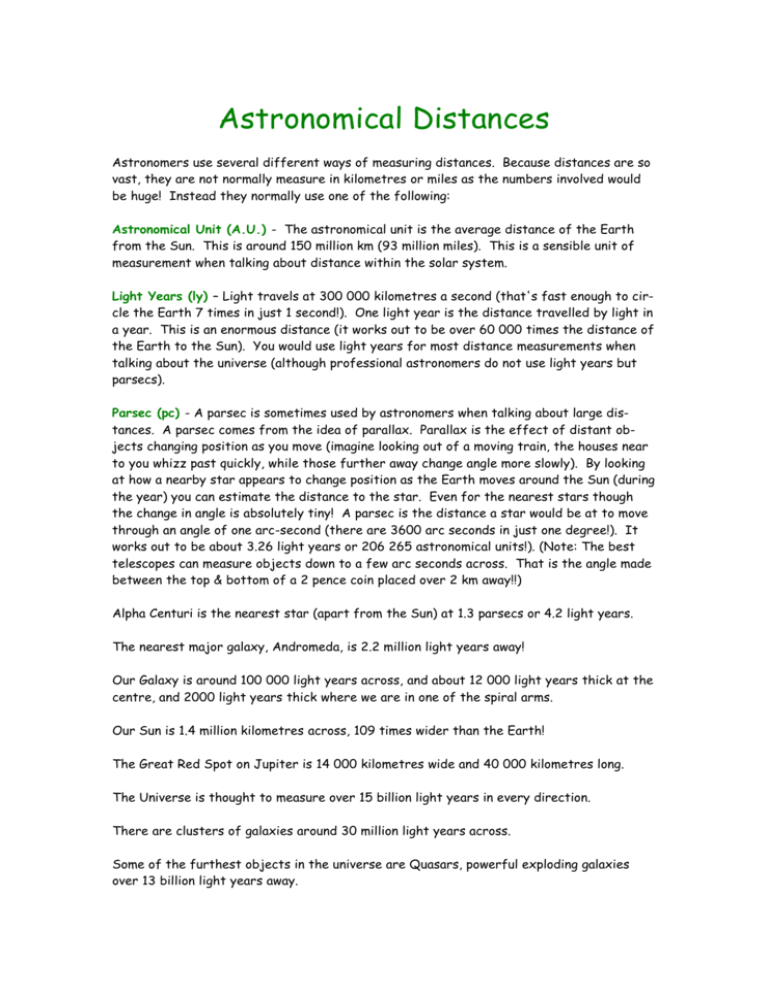
Astronomical Distances Astronomers use several different ways of measuring distances. Because distances are so vast, they are not normally measure in kilometres or miles as the numbers involved would be huge! Instead they normally use one of the following: Astronomical Unit (A.U.) - The astronomical unit is the average distance of the Earth from the Sun. This is around 150 million km (93 million miles). This is a sensible unit of measurement when talking about distance within the solar system. Light Years (ly) – Light travels at 300 000 kilometres a second (that's fast enough to circle the Earth 7 times in just 1 second!). One light year is the distance travelled by light in a year. This is an enormous distance (it works out to be over 60 000 times the distance of the Earth to the Sun). You would use light years for most distance measurements when talking about the universe (although professional astronomers do not use light years but parsecs). Parsec (pc) - A parsec is sometimes used by astronomers when talking about large distances. A parsec comes from the idea of parallax. Parallax is the effect of distant objects changing position as you move (imagine looking out of a moving train, the houses near to you whizz past quickly, while those further away change angle more slowly). By looking at how a nearby star appears to change position as the Earth moves around the Sun (during the year) you can estimate the distance to the star. Even for the nearest stars though the change in angle is absolutely tiny! A parsec is the distance a star would be at to move through an angle of one arc-second (there are 3600 arc seconds in just one degree!). It works out to be about 3.26 light years or 206 265 astronomical units!). (Note: The best telescopes can measure objects down to a few arc seconds across. That is the angle made between the top & bottom of a 2 pence coin placed over 2 km away!!) Alpha Centuri is the nearest star (apart from the Sun) at 1.3 parsecs or 4.2 light years. The nearest major galaxy, Andromeda, is 2.2 million light years away! Our Galaxy is around 100 000 light years across, and about 12 000 light years thick at the centre, and 2000 light years thick where we are in one of the spiral arms. Our Sun is 1.4 million kilometres across, 109 times wider than the Earth! The Great Red Spot on Jupiter is 14 000 kilometres wide and 40 000 kilometres long. The Universe is thought to measure over 15 billion light years in every direction. There are clusters of galaxies around 30 million light years across. Some of the furthest objects in the universe are Quasars, powerful exploding galaxies over 13 billion light years away.
